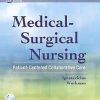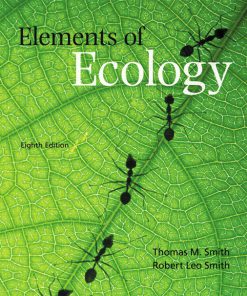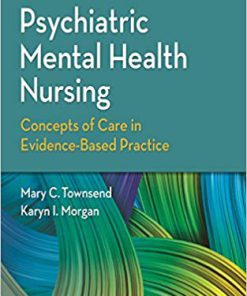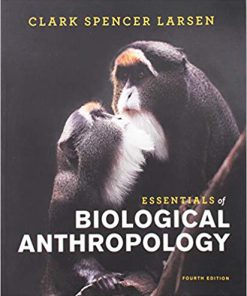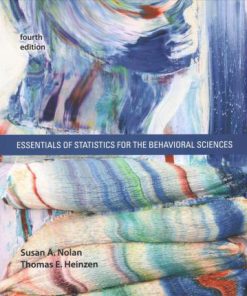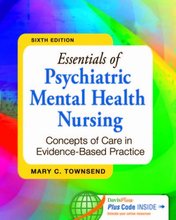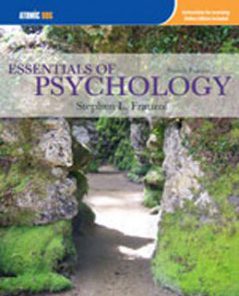Test Bank for Essentials of Ecology, 4th Edition by Begon, Howarth, Townsend
$35.00 Original price was: $35.00.$26.50Current price is: $26.50.
Test Bank for Essentials of Ecology, 4th Edition by Begon, Howarth, Townsend
SKU: canpv725336
Category: Test Bank
This is completed downloadable of Test Bank for Essentials of Ecology, 4th Edition by Begon, Howarth, Townsend
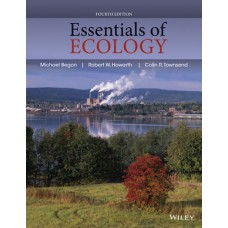
Product Details:
ISBN-13: 978-0470909133
Author: Begon, Howarth, Townsend
Essentials of Ecology presents introductory ecology in an accessible, state-of-the-art format designed to cultivate the novice student’s understanding of, and fascination with, the natural world. This new edition has been updated throughout, with new, full-color illustrations, and comes with an accompanying website with downloadable illustrations, multiple-choice questions, and interactive models.
Table of Content:
- Part 1: Introduction
- Chapter 1: Ecology and how to do it
- 1.1: What is ecology?
- 1.2: Scales, diversity of approaches, and rigor
- 1.3: Ecology in practice
- Summary
- Review questions
- Chapter 2: Ecology’s Evolutionary Backdrop
- 2.1: Evolution by natural selection
- 2.2: Evolution within species
- 2.3: The ecology of speciation
- 2.4: The effects of climatic change on the evolution and distribution of species
- 2.5: Continental drift, parallel and convergent evolution
- 2.6: Conclusion
- Summary
- Review Questions
- Part 2: Conditions and Resources
- Chapter 3: Physical conditions and the availability of resources
- 3.1: Environmental conditions
- 3.2: Resources for photosynthetic organisms
- 3.3: Heterotrophs and their resources
- 3.4: Effects of intraspecific competition for resources
- 3.5: Conditions, resources, and the ecological niche
- Summary
- Review questions
- Chapter 4: Climate and the world’s biomes
- 4.1: The world’s climate
- 4.2: Terrestrial biomes
- 4.3: Aquatic ecosystems on the continents
- 4.4: Ocean biomes
- Summary
- Review questions
- Part 3: Individuals and Populations
- Chapter 5: Birth, death, and movement
- 5.1: Populations, individuals, births and deaths
- 5.2: Life cycles
- 5.3: Monitoring birth and death: life tables and fecundity schedules
- 5.4: Dispersal and migration
- 5.5: The impact of intraspecific competition on populations
- 5.6: Life history patterns
- Summary
- Review Questions
- Chapter 6: Interspecific competition
- 6.1: Ecological effects of interspecific competition
- 6.2: Evolutionary effects of interspecific competition
- 6.3: Interspecific competition and community structure
- 6.4: How significant is interspecific competition in practice?
- Summary
- Review questions
- Chapter 7: Predation, grazing, and disease
- 7.1: What do we mean by predation?
- 7.2: Prey fitness and abundance
- 7.3: The subtleties of predation
- 7.4: Predator behavior: foraging and transmission
- 7.5: Population dynamics of predation
- 7.6: Predation and community structure
- Summary
- Review questions
- Chapter 8: Molecular and evolutionary ecology
- 8.1: Molecular Ecology: Differentiation within and between species
- 8.2: Coevolutionary arms races
- 8.3: Mutualistic interactions
- Summary
- Review questions
- Part 4: Communities and Ecosystems
- Chapter 9: From populations to communities
- 9.1: Multiple determinants of the dynamics of populations
- 9.2: Dispersal, patches, and metapopulation dynamics
- 9.3: Temporal patterns in community composition
- 9.4: Food webs
- Summary
- Review questions
- Chapter 10: Patterns in species richness
- 10.1: Quantifying species richness and diversity
- 10.2: Spatially varying factors influencing species richness
- 10.3: Temporally varying factors influencing species richness
- 10.4: Habitat area and remoteness: island biogeography
- 10.5: Gradients of species richness
- Summary
- Review questions
- Chapter 11: The flux of energy and matter through ecosystems
- 11.1: The role of energy in ecology
- 11.2: Geographic patterns in primary productivity
- 11.3: Factors limiting terrestrial primary productivity
- 11.4: Factors limiting aquatic primary productivity
- 11.5: The fate of primary productivity: grazing
- 11.6: The process of decomposition
- 11.7: The flux of matter through ecosystems
- 11.8: Nutrient budgets and cycling at the ecosystem scale
- Summary
- Review questions
- Part 5: Applied Issues in Ecology
- Chapter 12: Global biogeochemical cycles and their alteration by humans
- 12.1: What is biogeochemistry?
- 12.2: The global carbon dioxide cycle
- 12.3: The global methane cycle
- 12.4: The nitrogen cycle at global and regional scales
- Summary
- Review questions
- Chapter 13: Conservation ecology
- 13.1: The need for conservation
- 13.2: Small populations
- 13.3: Threats to biodiversity
- 13.4: Conservation in practice
- 13.5: Ecosystem services
- Summary
- Review questions
- Chapter 14: The ecology of human population growth, disease, and food supply
- 14.1: Human use of ecological resources
- 14.2: The human population problem
- 14.3: Ecology and human health
- 14.4: Synthetic fertilizer and the intensification of agriculture
- 14.5: Monocultures, pests, and pesticides in agriculture
- 14.6: Global land use and other constraints on continued intensification of agriculture
- 14.7: Food from fisheries and aquaculture
- Summary
- Review questions
- References
- Index
- End User License Agreement
People Also Search:
essentials of ecology 4th edition by begon howarth townsend
essentials of ecology 4th edition by begon howarth townsend download scribd
essentials of ecology 4th edition by begon howarth townsend test bank download pdf
You may also like…
Sale!
Sale!
Sale!
Test Bank
Test Bank for Essentials of Psychiatric Mental Health Nursing, 7th Edition Mary C. Townsend
Sale!
Sale!
Sale!
Sale!
Sale!
Sale!


